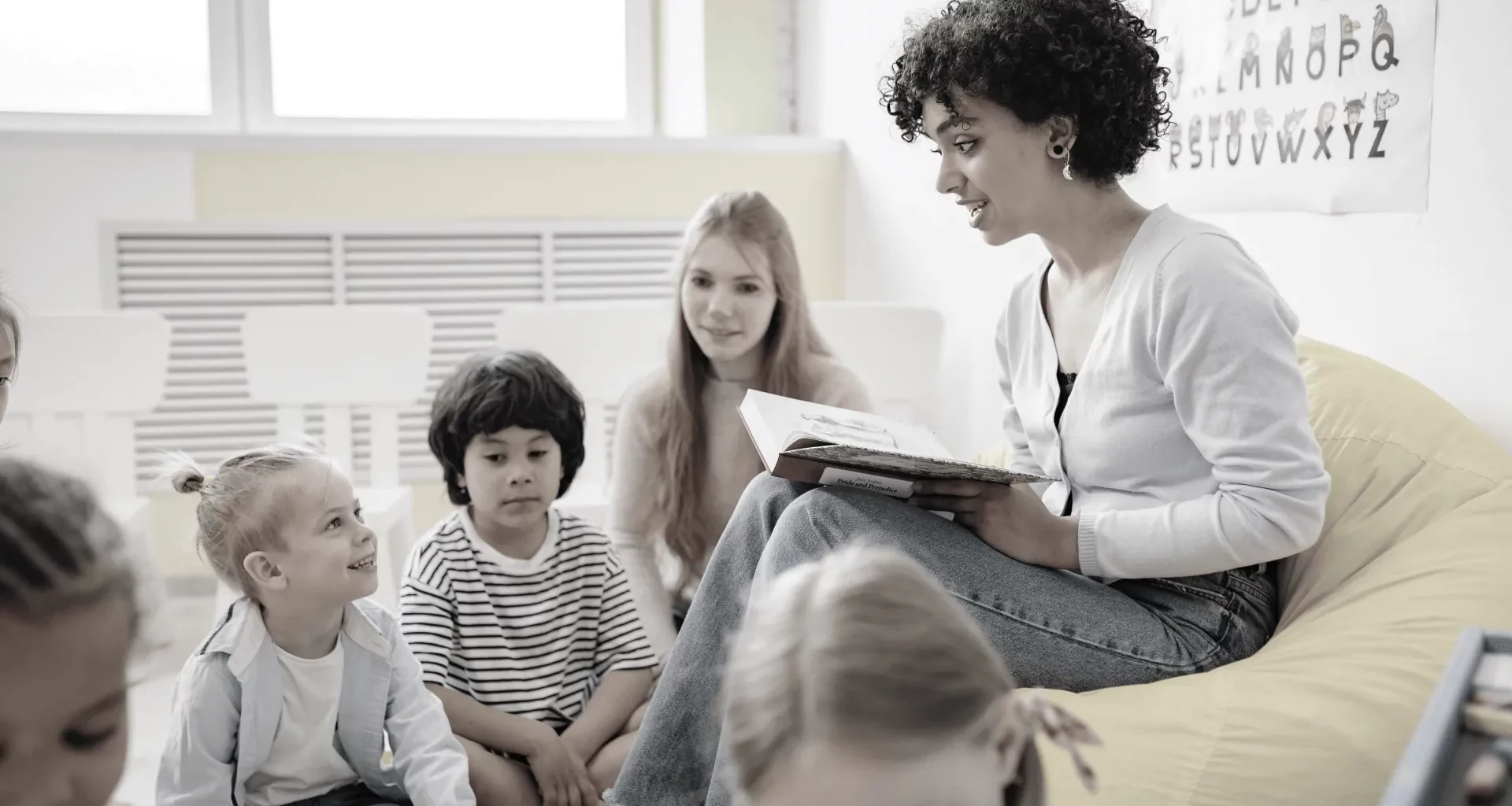Table of Contents
- What is Social Emotional Learning (SEL)?
- How Social-Emotional Learning will help you to be resilient in the face of adversity
- How Social Emotional Learning can help individuals develop positive relationships with others
- The importance of Social Emotional Learning in schools and other educational settings
- The role of parents and caregivers in promoting Social Emotional Learning and mental health in children
- The link between Social Emotional Learning and depression prevention and Management
- The connection between Social Emotional Learning and substance abuse prevention
- The role of SEL in promoting positive mental health in the workplace
- The Future of Social-Emotional Learning Research and its potential impact on mental health initiatives
- Frequently Asked Questions

Social-emotional learning (SEL) is a process that involves acquiring and applying skills related to self-awareness, self-management, social awareness, relationship skills, and responsible decision-making. These skills are essential for achieving positive outcomes in both personal and professional settings.
What is Social Emotional Learning (SEL)?
Social Emotional Learning (SEL) is an educational approach that involves developing essential social and emotional competencies in students. SEL is based on the understanding that emotional, social, and academic learning are interconnected and that one cannot occur without the other. SEL aims to teach students to understand and manage their emotions, establish and maintain positive relationships, and make responsible decisions.
How Social-Emotional Learning will help you to be resilient in the face of adversity
1. SEL Skills that Promote Resilience
There are several SEL skills that have been identified as promoting resilience in the face of adversity. These include self-awareness, self-regulation, and social awareness. For example, research has shown that individuals who are self-aware are better able to recognize and manage their emotions, which can help them navigate challenging situations. Similarly, individuals who are socially aware are better able to understand the perspectives and feelings of others, which can help them build positive relationships and support networks.
2. The Role of Positive Relationships
Positive relationships are another key component of both SEL and resilience. Research has shown that positive relationships with parents, teachers, and peers can provide a supportive environment that promotes resilience in the face of adversity. Positive relationships also provide individuals with a sense of belonging and connectedness, which can help them feel more secure and confident in their ability to navigate challenging situations.
3. Examples of SEL Programs that Promote Resilience
There are several SEL programs that have been developed specifically to promote resilience in the face of adversity. For example, the Penn Resiliency Program is a school-based program that teaches students skills such as cognitive restructuring, problem-solving, and assertiveness training. Another example is the Roots of Empathy program, which focuses on promoting empathy and understanding among students, with the goal of creating a more supportive and connected classroom environment.
4. The Connection between Social Emotional Learning and Trauma-Informed Approaches
Trauma-informed approaches are an important component of promoting resilience in the face of adversity. These approaches emphasize the importance of creating a safe and supportive environment that recognizes and responds to the impacts of trauma. SEL skills are an important component of trauma-informed approaches, as they help individuals develop the skills to manage their emotions, build positive relationships, and make responsible decisions in the face of challenging situations.
The connection between SEL and resilience in the face of adversity is strong. SEL skills such as self-awareness, self-regulation, and social awareness promote resilience by helping individuals manage their emotions, build positive relationships, and make responsible decisions. Positive relationships and trauma-informed approaches are also important components of promoting resilience. Examples of SEL programs that promote resilience include the Penn Resiliency Program and the Roots of Empathy program.
How Social Emotional Learning can help individuals develop positive relationships with others
1. Self-Awareness and Empathy
Self-awareness is an important SEL skill that can help individuals develop positive relationships with others. By being aware of their own emotions and thoughts, individuals can better understand how they interact with others and how their behavior affects others. Empathy is another important SEL skill that can help individuals develop positive relationships. By being able to understand and share the feelings of others, individuals can build trust and rapport with others.
2. Effective Communication
Effective communication is another key component of SEL that can help individuals develop positive relationships with others. By being able to communicate their needs, wants, and feelings clearly and respectfully, individuals can build trust and foster understanding with others. Effective communication also involves active listening, which allows individuals to truly understand the perspectives and feelings of others.
3. Collaborative Problem-Solving
Collaborative problem-solving is an important SEL skill that can help individuals develop positive relationships with others. By working together to find solutions to problems, individuals can build trust and a sense of shared purpose with others. Collaborative problem-solving also involves the ability to negotiate and compromise, which can help individuals develop a sense of fairness and respect for others.
4. Examples of Social Emotional Learning Programs that Promote Positive Relationships
Several SEL programs have been developed specifically to promote positive relationships with others. For example, the Second Step program is a school-based program that teaches students skills such as empathy, communication, and problem-solving. Another example is the PATHS program, which focuses on promoting emotional understanding and regulation, social skills, and problem-solving skills.
Social and emotional learning (SEL) is a process through which individuals acquire skills to manage emotions, build positive relationships, and make responsible decisions.
Social and emotional learning (SEL) is a process through which individuals acquire skills to manage emotions, build positive relationships, and make responsible decisions. SEL skills such as self-awareness, empathy, effective communication, and collaborative problem-solving can help individuals develop positive relationships with others. Examples of SEL programs that promote positive relationships include the Second Step program and the PATHS program
The importance of Social Emotional Learning in schools and other educational settings
1. Academic Achievement
Research has shown that SEL programs can have a positive impact on academic achievement. A study conducted by the Collaborative for Academic, Social, and Emotional Learning (CASEL) found that students who participated in SEL programs showed an 11 percentile point increase in academic achievement compared to those who did not. This increase was particularly significant for low-income students and students of color. SEL programs also improve students’ attitudes toward learning and reduce absenteeism and disciplinary incidents.
2. Social and Emotional Competence
SEL programs help students develop social and emotional competence, which includes skills such as self-awareness, self-regulation, empathy, and communication. These skills are crucial for building positive relationships, managing conflict, and making responsible decisions. SEL programs provide a safe and supportive environment for students to practice these skills, which can have a positive impact on their relationships with peers, teachers, and family members.
3. Mental Health and Well-being
SEL programs can also have a positive impact on students’ mental health and well-being. A meta-analysis of 82 studies on school-based mental health interventions found that SEL programs were effective in reducing symptoms of depression, anxiety, and stress. These programs also increase students’ resilience and coping skills, which can help them navigate difficult situations both in and out of school.
4. Examples of Successful SEL Programs
Several SEL programs have been successfully implemented in schools and other educational settings. The Responsive Classroom approach, for example, is a research-based program that emphasizes the importance of building positive relationships, creating a safe and supportive environment, and developing social and emotional competence. Another example is the Second Step program, which is designed to teach social and emotional skills to children in kindergarten through eighth grade. This program includes lessons on emotion management, problem-solving, and empathy.
In conclusion, SEL is an important approach for promoting academic achievement, social and emotional competence, and mental health and well-being in schools and other educational settings. Research has shown that SEL programs can have a positive impact on students’ academic performance, behavior, and overall well-being. Implementing SEL programs can help create a safe and supportive environment for students to learn and grow, and can equip them with the skills they need to navigate the challenges of adolescence and adulthood.
The role of parents and caregivers in promoting Social Emotional Learning and mental health in children
Parents and caregivers play a critical role in promoting social and emotional learning (SEL) and mental health in children. SEL skills such as self-awareness, self-regulation, and relationship-building are developed early in life, and parents and caregivers can create a supportive environment that fosters these skills. In this article, we will explore the role of parents and caregivers in promoting SEL and mental health in children.
1. Modeling SEL Skills
Parents and caregivers can model SEL skills for children by practicing self-awareness, self-regulation, and relationship-building. Research has shown that children learn by observing the behavior of the adults in their lives. Parents and caregivers can demonstrate positive emotional regulation and communication skills, which can help children develop these skills as well
2. Supporting Children’s Social and Emotional Development
Parents and caregivers can support children’s social and emotional development by creating a safe and supportive environment. This includes providing opportunities for children to practice their social and emotional skills, such as listening, communicating, and problem-solving. Parents and caregivers can also provide positive feedback and reinforcement when children demonstrate positive social and emotional behavior.
3. Promoting Mental Health and Well-being
Parents and caregivers can promote children’s mental health and well-being by prioritizing their own mental health and well-being. Research has shown that parents who experience high levels of stress or mental health challenges are more likely to have children who experience similar challenges. Prioritizing self-care and seeking support when needed can help parents and caregivers better support the mental health and well-being of their children.
4. Examples of Parental Involvement in SEL Programs
Parents and caregivers can also be involved in SEL programs in schools and other educational settings. For example, the Incredible Years program is a school-based SEL program that involves parents and caregivers in the implementation of the program. Parents and caregivers attend training sessions to learn the same SEL skills that their children are learning, and they are encouraged to practice these skills at home. Another example is the Strong Families; Strong Schools program, which is designed to promote family engagement in SEL and academic success. This program involves workshops and resources for parents and caregivers to support their children’s social and emotional development.
Parents and caregivers play a critical role in promoting social and emotional learning and mental health in children. Modeling SEL skills, supporting children’s social and emotional development, and promoting mental health and well-being are all important strategies for parents and caregivers. Involvement in SEL programs in schools and other educational settings can also provide additional support for children’s social and emotional development.
The link between Social Emotional Learning and depression prevention and Management
1. Emotional Regulation
One of the core components of SEL is emotional regulation. Emotional regulation refers to the ability to manage and regulate one’s emotions in a healthy and constructive way. Research has shown that individuals who struggle with emotional regulation are at a higher risk for depression. By developing emotional regulation skills through SEL, individuals can learn to manage their emotions healthily, reducing their risk for depression.
2. Relationship Building
Another core component of SEL is building positive relationships. Positive relationships with family, friends, and other individuals can provide social support and a sense of belonging, which can be protective against depression. SEL programs teach individuals how to build positive relationships, communicate effectively, and develop empathy, all of which can help prevent depression
3. Problem-Solving Skills
SEL programs also teach individuals problem-solving skills. Research has shown that individuals who have strong problem-solving skills are less likely to experience depression. By learning how to identify and solve problems, individuals can build resilience and cope effectively with stressors that might otherwise lead to depression.
4. Examples of SEL Programs for Depression Prevention and Management
Several SEL programs have been developed specifically for depression prevention and management. For example, the Penn Resiliency Program is a school-based program that teaches adolescents skills for building resilience and coping with stress. Another example is the FRIENDS program, which is designed to prevent anxiety and depression in children by teaching coping and problem-solving skills.
In conclusion, SEL can be a powerful tool for preventing and managing depression. By developing emotional regulation skills, building positive relationships, and learning problem-solving skills, individuals can reduce their risk for depression and cope more effectively with stressors. Examples of SEL programs for depression prevention and management include the Penn Resiliency Program and the FRIENDS program.
The connection between Social Emotional Learning and substance abuse prevention
1. Coping with Stress
One of the key components of SEL is stress management. SEL teaches individuals how to cope with stress in healthy ways, such as through relaxation techniques, exercise, and positive self-talk. Research has shown that individuals who have strong stress management skills are less likely to turn to drugs or alcohol as a way of coping with stress.
2. Responsible Decision-Making
Another core component of SEL is responsible decision-making. SEL programs teach individuals how to make decisions that are in line with their values and goals, and that consider the potential consequences of their actions. By learning how to make responsible decisions, individuals can avoid risky behaviors that could lead to substance abuse.
3. Building Positive Relationships
SEL programs also teach individuals how to build positive relationships with peers and adults. Positive relationships can provide social support and a sense of belonging, which can be protective against substance abuse. Individuals who have strong relationships with supportive peers and adults are less likely to turn to drugs or alcohol as a way of coping with stress or fitting in with their peers.
4. Examples of SEL Programs for Substance Abuse Prevention
Several SEL programs have been developed specifically for substance abuse prevention. For example, the LifeSkills Training program is a school-based program that teaches students how to resist peer pressure to use drugs and alcohol, while also building coping and decision-making skills. Another example is the Strengthening Families Program, which is a family-based program that aims to improve family communication and relationships, while also providing education about substance abuse.
In conclusion, SEL can be an effective tool for preventing substance abuse by teaching individuals how to cope with stress, make responsible decisions, and build positive relationships. Examples of SEL programs for substance abuse prevention include the LifeSkills Training program and the Strengthening Families Program.
The role of SEL in promoting positive mental health in the workplace
1. Stress Management
Stress is a common experience in the workplace, and it can have negative effects on mental health if not managed effectively. SEL can help individuals manage stress in healthy ways, such as through mindfulness, relaxation techniques, and positive self-talk. Research has shown that workplace stress can be reduced by incorporating mindfulness practices and stress management techniques, such as deep breathing and meditation, into daily routines.
2. Building Positive Relationships
Positive relationships are a key component of SEL, and they can be just as important in the workplace as they are in other areas of life. Positive relationships can provide social support, reduce feelings of isolation, and promote a sense of belonging. In the workplace, positive relationships with colleagues can also lead to increased job satisfaction and productivity. Research has shown that supportive workplace relationships can reduce stress and improve overall well-being.
3. Responsible Decision-Making
Responsible decision-making is another core component of SEL that is relevant in the workplace. By learning how to make responsible decisions, individuals can avoid making impulsive or risky decisions that could have negative consequences for their mental health. Responsible decision-making can also promote a sense of control and self-efficacy, which can lead to increased confidence and job satisfaction.
4. Examples of Social Emotional Learning Programs in the Workplace
Several SEL programs have been developed specifically for the workplace. For example, the Mindful Employer program is a workplace-based program that aims to improve employee well-being by promoting mindfulness, stress management, and positive relationships. Another example is the Resilience at Work program, which is designed to help employees build resilience and coping skills to better manage workplace stressors.
SEL can play a key role in promoting positive mental health in the workplace by helping individuals manage stress, build positive relationships, and make responsible decisions. Examples of SEL programs in the workplace include the Mindful Employer program and the Resilience at Work program.
The Future of Social-Emotional Learning Research and its potential impact on mental health initiatives
1. Recent Advances in SEL Research
Recent research has shown that SEL programs can have a significant positive impact on mental health outcomes. For example, a study published in the Journal of School Psychology found that students who participated in the SEL program had significantly lower rates of depression, anxiety, and stress compared to those who did not participate.
Another study published in the Journal of Educational Psychology found that students who received SEL instruction had significantly higher levels of emotional competence, including self-awareness, self-regulation, and relationship skills.
2. The Impact of Social Emotional Learning Research on Mental Health Initiatives
The potential impact of SEL research on mental health initiatives is significant. By providing individuals with the tools to develop their social and emotional skills, SEL programs can help prevent and manage mental health issues such as depression, anxiety, and substance abuse.
For example, a review of research on the effectiveness of school-based substance abuse prevention programs found that programs that include SEL components are more effective at reducing substance use than those that do not.
Similarly, a study found that an SEL program for at-risk youth was effective in reducing symptoms of depression and anxiety, as well as improving academic outcomes.
3. The Future of Social Emotional Learning Research
As the field of SEL research continues to grow, the potential impact of SEL on mental health initiatives is becoming increasingly clear. With the development of new interventions and a better understanding of how SEL programs can be implemented in a variety of settings, there is great potential for SEL to have a significant impact on mental health outcomes.
One area of future research may be the development of online SEL programs, which could be more accessible and affordable than traditional in-person programs. Another area of research may be the exploration of how SEL can be incorporated into mental health treatment and prevention programs.
Overall, the future of SEL research is promising, and the potential impact of SEL on mental health initiatives is significant. By continuing to advance our understanding of SEL and its relationship to mental health, we can develop more effective programs and interventions that can help individuals of all ages lead happier and healthier lives.
Frequently Asked Questions
Yes, social-emotional learning can be beneficial for adults in personal and professional settings. It can improve emotional intelligence, communication skills, and overall mental health and well-being.
Examples of social-emotional learning activities that can be practiced at home include journaling, meditation, practicing active listening skills, and engaging in activities that promote positive relationships, such as playing board games together or cooking a meal as a family.
Social-emotional learning can benefit students with special needs or learning differences by providing a framework for developing skills in self-regulation, social skills, and communication. It can also help to build self-esteem and promote a positive sense of identity.
Yes, social-emotional learning can be integrated into workplace training programs to improve communication, teamwork, and conflict-resolution skills among employees. It can also help to promote a positive work culture and improve employee satisfaction and retention.









